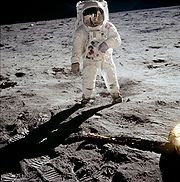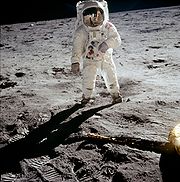Strangelets in the night
Normal nuclear matter consists of up and down quarks, which form the protons and neutrons inside atomic nuclei. Bodmer [1] and Witten [2] speculated, however, that the true ground state of hadronic matter might consist of roughly equal amounts of down, up, and strange quarks inside a single hadronic bag. Despite numerous searches for small chunks of such strange quark matter, called strangelets, and despite some “interesting events”, there is as yet no definite evidence for their existence.
If stable strange matter does exist, then what are thought to be neutron stars may in fact be strange stars. A strange star that is a member of a binary star system could collide with its partner and eject strange quark matter into space. Under this scenario, the Moon, with no magnetic field to deflect them, has been subjected for billions of years to a flux of strangelets impacting its surface. These particles would remain fairly undisturbed because of the lack of geological activity on the Moon.
In Physical Review Letters, Ke Han and colleagues at Yale University, in the US, in collaboration with the Massachusetts Institute of Technology, in the US, and the University of Aarhus, in Denmark, report experiments using the Yale accelerator as a mass spectrometer to search for low-mass strangelets in lunar soil brought back by the Apollo 11 mission. The team did not find strangelets within the mass and charge ranges searched, but the data do rule out an unpublished candidate event from the 1998 Alpha Magnetic Spectrometer (AMS) prototype flight. The full AMS experiment is tentatively scheduled for installation on the International Space Station in 2010 and will vastly increase both the sensitivity and the mass range of the search. – Jerome Malenfant
[1] A.R. Bodmer, Phys. Rev. D 4, 1601 (1971).
[2] E. Witten, Phys. Rev. D 30, 272 (1984).





